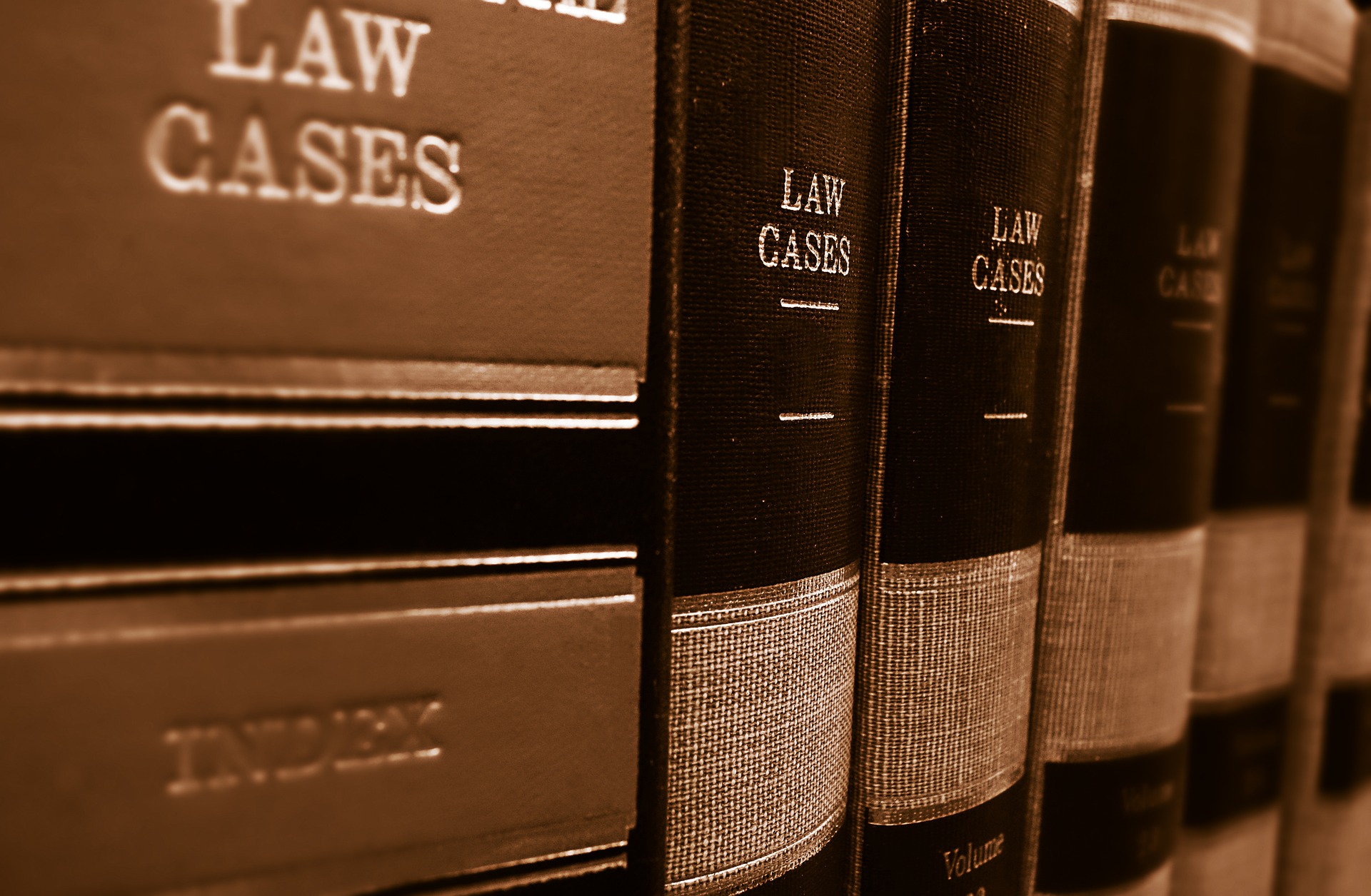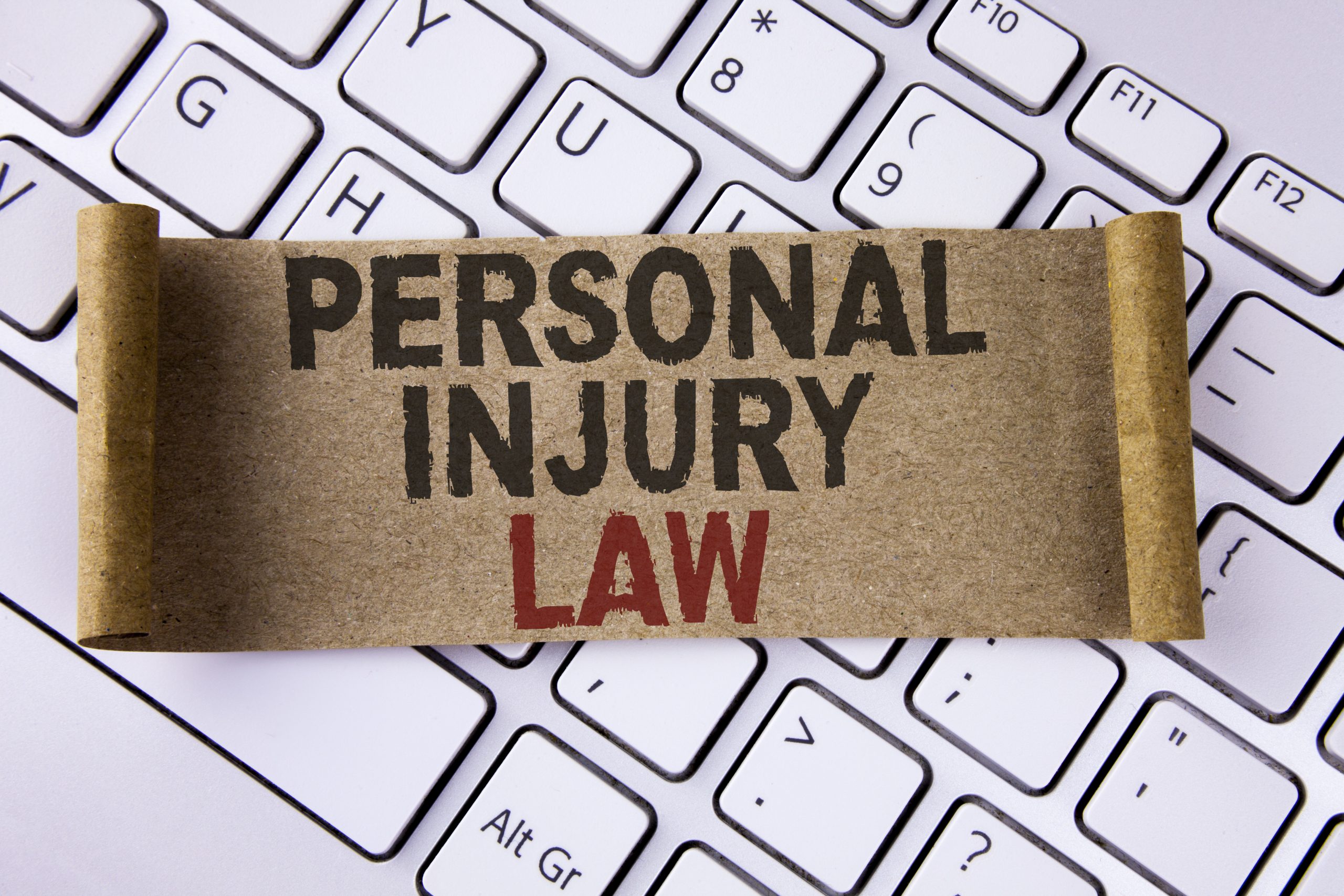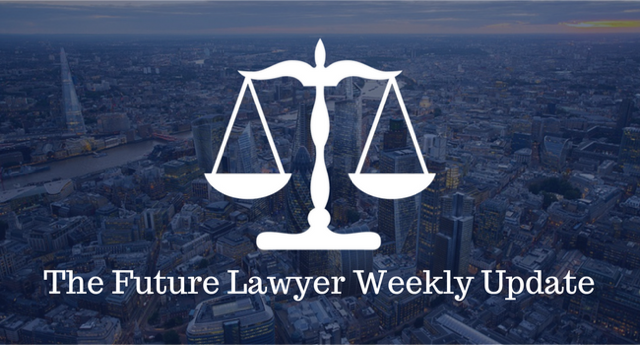
Who is Liable in a Tort Case?
March 30, 2020
Injury Law: Common Accidents In The Workplace And When You Should Talk To A Lawyer
April 1, 2020The round-up of the stories that a budding Student Lawyer should be aware of this week. Sign up here to get these updates in your inbox every week.
HS2 Injunction
Legal case to halt HS2 begins
Reported by Ellena Mottram
The naturalist and broadcaster Chris Packham is seeking an urgent injunction to immediately halt HS2’s destruction of ancient woodlands. This comes as campaigners criticize construction teams working on the high-speed rail of allegedly ignoring the government’s distancing rules during the coronavirus outbreak.
Mr Packham has launched a crowdfunded legal challenge which includes an interim injunction to stop works which are set to destroy ancient woodland areas in April. It is alleged HS2 contractors are using the coronavirus crisis to increase tee-felling in the areas without scrutiny.
Campaigners highlight this is a particularly dangerous time to destroy to woodlands as it comes during nesting season. The RSPB highlights the nesting season occurs between April and September and has asked locals to report incidents of destruction of active bird’s nests, which is an illegal activity.
He is seeking an interim injunction to halt all clearance and construction works of five ancient woodlands. The woodlands at the heart of the interim injunction are Broadwells Wood, Birches Wood, Cracklet Woods, Ashow Road Wood and Fulfren Wood. He argues to work would cause irreversible and irreparable loss to the ancient woodlands and would disturb European protected species and nesting birds.
In addition to the interim injunction Mr Packham is also seeking a judicial review of the decision to allow construction of HS2 to proceed. The basis of the review is that the construction is unlawful because it was predicted on the finding and recommendations of the Oakervee Review. It is alleged this review failed to provide an independent review of the relevant environmental and climate change factors.
The challenge follows the Court of Appeal ruling that the construction of a third runway at Heathrow was illegal over climate change, specifically because it did not reference the Paris climate agreement. The environmental statement for HS2 was made before the government signed the Paris agreement and committed to achieving net zero carbon emissions by 2050.
Mr Packham is being represented by the law firm Leigh Day who highlighted that the ‘environmental impacts relevant to the decision whether to proceed have not been properly assessed’. The Department for Transport is yet to respond to the claim but have said “We understand campaigners’ concerns and have tasked HS2 Ltd to deliver one of the UK’s most environmentally responsible infrastructure projects. When finished, HS2 will play a key part in our efforts to tackle climate change, reducing carbon emissions by providing an alternative to domestic flights and cutting congestion on our roads.”
Intellectual Property
Tattoo copyright in the US
Reported by Laurence Tsai
A New York court has ruled on a long-awaited case regarding tattoo copyright in the US. Previous US case-law has established that tattoo designs are entirely consistent with copyright law, meaning a person’s skin constitutes a tangible medium for expression. Yet this is the first written judgement as to tattoo copyright.
The parties to the dispute are Solid Oak Sketches (“SOS”) and Take-Two Interactive Software, developer and producer of the NBA 2K video game. SOS had filed a lawsuit in 2016 against Take-Two due to the game’s unauthorized reproductions of tattoos of NBA stars, LeBron James, Eric Bledsoe and Kenyon Martin.
SOS alleged it acquired licensing rights from various tattoo artists who were responsible for inking the NBA stars. According to the New York court, when artists tattoo someone, they grant an implied non-exclusive licence to their work where it can be reasonably expected to become part of a person’s likeness. The NBA stars in turn had licensed use of their likeness to NBA and also consented to Take-Two’s use of their likeness in the video game.
It can be seen that the ruling would provide protection both to the individuals’ personal expression when they choose to get tattoos, as well as those within any industry in which their roles encourage the use of their creativity to depict people as they appear in real life.
The Copyright Act 1976 affords exclusive protection to artists who can establish three things:
(a) That their creation is the type of work that is protectable under the Act,
(b) That the work in question is both original and creative, and
(c) That the work is affixed to a tangible medium for expression.
However, regardless of this statement, under US law, de minimis copyright infringement is not actionable. This means the alleged infringer must prove that the copying is so trivial as to fall below the quantitative threshold of substantial similarity. Indeed, this was one of the arguments advanced by the defendants as the tattoos in question were a miniscule part of the video game and could not be observed properly by a lay observer.
The defendant had also counterclaimed that in any case, the use of the tattoos constituted fair use. Under US law, there are four fair use factors:
(a) Purpose and character of the use;
(b) The nature of the copyrighted work;
(c) Amount and substantiality of the use; and
(d) Effect on the market.
The court held in this instance that an assessment needed to be made based on evidence as to the degree and extent to which the tattoos featured in the game, in order to provide a proper final ruling on the case.
On a preliminary review, it could be argued that the tattoos used by the defendants fell within the scope of the fair use provisions. This is because the purpose and character of the use was transformative, in that it was meant to represent the likeness of the NBA stars. Statements and evidence of fact posited by the defendant also indicated that the digitalised tattoos formed a minute amount of data of the entire video game, around 0.04% data. Additionally, the rationale of copyright, and indeed all of IP, is to promote creativity and further society with intellectual creations which benefit and influence the world. To that end, if the court rules against the defendant on any one of its grounds, the ruling may set a negative precedent by restricting the creative output of designers who aim to produce work in a digital medium, such as in this case.
Breach of Data Protection Act in relation to Isis Killers
Cooperation over Isis killers ruled unlawful
Reported by Emma Ducroix
The UK decided to cooperate with the US over two alleged Isis killers. However, the Supreme court says the UK broke the law because it did not get assurance from the US that men would not face death penalty.
In a unanimous judgment that will have repercussions for US-UK relations, the court’s seven justices said the home secretary’s agreement to provide evidence about El Shafee Elsheikh and Alexanda Kotey breached data protection rules.
Delivering the judgment, Lord Kerr said that under the Data Protection Act transferring information in this context was contrary to law. He said: “Such processing is only lawful where it complies with the data protection principles in section 34 DPA. I concluded that since the transfer of material to the US authorities without obtaining death penalty assurances was contrary to law, it followed that the first and second principles – requiring processing that is lawful and fair – were not met.”
Elsheikh and Kotey, who were raised in Britain, are alleged to have been part of an Isis terrorist cell, some of whom were known as “the Beatles”, that is thought to have carried out 27 beheadings of US and UK citizens in Isis-held territory. Those killed included the British aid workers Alan Henning and David Haines and the American journalists James Foley and Steven Sotloff.
The pair, who have been stripped of their British citizenship, were captured in February 2018 by Syrian Kurdish fighters, prompting behind-the-scenes negotiations between the UK and US governments over where they should be prosecuted.
The decision not to seek assurances from the US that the two men would not face the death penalty was in defiance of advice from the Foreign Office and senior civil servants, the courts were told by lawyers for Maha Elgizouli, Elsheikh’s mother.
In 2018 it emerged that the then home secretary, Sajid Javid, had written to the US attorney general, Jeff Sessions, telling him that the UK “does not currently intend to request, nor actively encourage,” the transfer of Kotey and Elsheikh to Britain and there were “strong reasons for not requiring a death penalty assurance in this specific case”.
In the judgment, Lady Hale, who has since retired as the court’s president, declared: “The most fundamental of the rights protected by the European Convention [on human rights] is the right to life. This is an absolute right, not qualified by the possibility of restrictions or interferences which are ‘necessary in a democratic society’.”
Kerr’s judgement went even further, asserting: “I believe that the time has arrived where a common law principle should be recognised whereby it is deemed unlawful to facilitate the trial of any individual in a foreign country where, to do so, would put that person in peril of being executed.”
A Home Office spokesperson said: “The government’s priority has always been to maintain national security and to deliver justice for the victims and their families. This has not changed. We are clearly very disappointed with today’s judgment and are carefully considering next steps.”
Find out more here.
Case Law – Ofcom Regulation of Russian News Channels
R (Autonomous Non-Profit Organisation TV- Novosti) and The Office of Communications [2020] EWHC 689 (Admin)
Reported by Jimmy Johnson
This case was between the Office of Communications (‘Ofcom’) – the regulatory and competition authority for the broadcasting, telecommunications and postal industries of the UK – and RT, the global news network funded by the Russian Federation which ‘covers stories overlooked by the mainstream media, provides alternative perspectives on current affairs, and acquaints international audiences with a Russian viewpoint on major global events.’ Ofcom is required by the Communications Act 2003 to create a Code (the Ofcom Broadcasting Code) for, among other things, standards in programmes, with which broadcast licensees, such as RT, are required to comply as a condition of their licences. One of the standards objectives is that news included in television and radio services is presented with due impartiality especially matters of political or industrial controversy and matters relating to current public policy.
On 20 December 2018 Ofcom determined that seven television programmes broadcast by RT between 17 March and 26 April 2018 had breached the requirement of due impartiality. The programmes addressed the poisoning of Sergei Skripal and his daughter Yulia Skripal on 4 March 2018 in Salisbury, the role of the US Government in Syria, and the Ukrainian Government’s position on Roma gypsies and Nazism. On 26 July 2019 Ofcom imposed a financial penalty of £200,000 on RT for these breaches. RT challenged both the (1) breach and (2) sanction decisions. It claimed (1) Ofcom committed an error of approach in reaching the breach decision which was a violation of its right to freedom of expression found in article 10 of the Convention for the Protection of Human Rights and Fundamental Freedoms. (2) The sanction was disproportionate.
The first problem for the Court to resolve was the proper interpretation of due impartiality provisions in the 2003 Act. RT argued that they were not in breach of due impartiality requirements when they omitted to include in the relevant broadcasts that the UK Government and others suspected Russia was responsible for the poisonings. This was because that narrative was (a) the dominant one in UK news and therefore RT could justifiably exclude it – ubiquitous coverage by other providers obviated RT’s need to reproduce it in their programme, either because it was too obvious and known to need mentioning or it was abundantly available elsewhere (RT provided evidence that the average viewer acquires news from multiple sources). (B) RT did present that view, just not in the programmes in question. RT argued that Ofcom as a matter of correct approach should have taken (a) and (b) into account in coming to a decision about breach, and that if the Court finds Ofcom did not have to take these into account, the provisions violate their article 10 rights. Ofcom said they had correctly understood the Act and applied the Code, both of which are Convention compliant. The Court found with regards to (a) that the 2003 Act does not require Ofcom to take the broadcasts of others into account, and the ‘dominant media narrative this may or may not create.’ The rules clearly state that impartiality is to be ‘preserved on the part of the person providing the service.’
The dominant media narrative concept is a ‘nebulous one’ which for good reason is not considered. It is vulnerable to exploitation and creates uncertainty for broadcasters, ‘inhibiting rather than enhancing freedom of expression.’ Even if a broadcaster is aware of the dominant media narrative, that does not mean viewers are, or are sufficiently, and are then deprived of the full array of views. There will also be viewers who are somewhat familiar with it but ‘do not consider it when watching the relevant broadcast and so are denied the opportunity to assess the good from the bad.’ There are benefits to hearing a view you already know in the context of an enumeration of them all. Concerning (b) the Court said that though the due impartiality requirements can be met ‘in relation to a series of programmes taken as a whole’ viewers must be made aware of this connection and/or they must be clearly linked. Otherwise, ‘it would be a matter of chance whether the viewer knew about the other programmes in the series.’ Content broadcast by RT in one programme ‘may be relevant to the assessment of due impartiality in another programme only if that other content forms part of a series of programmes and the programmes are clearly linked.’ In other words, there can be no partial programmes which are claimed to meet impartiality standards because another unrelated programme presents a view which should have been included in the former programme. Ofcom and the Court found that the programmes were not ‘clearly linked’ and therefore RT was obliged to satisfy the requirement by reference to the content of the particular programme under dispute (rule 5.11 ‘preserves due impartiality by the person providing the service in each programme or in clearly linked and timely programmes.’) Although RT argued that on average a viewer will obtain news from a number of different sources, the legislative objective is to ensure that all viewers are exposed to the competing views. There could be no assurance that for example a particular viewer would see or look at other ‘balancing’ material from the broadcaster (unless clearly linked and directed) and therefore that the viewer would be drawn into an echo chamber or information silo of output which reinforced or reflected their pre-existing views.
The second problem was whether the 2003 Act and Code as above interpreted infringe RT’s article 10 rights. The Court discussed the importance of freedom of expression but said it is not absolute. 10(2) provides for restrictions on this right in order to protect the rights of others. In this case the freedom of expression rights of RT and the viewers of its programmes and for the democratic state in general. The Court stated that the aim of the Act and Code is ‘to ensure that other viewpoints are received by viewers who may then participate on an informed basis in the democratic processes including those of debate and voting. To ensure that the broadcast media provide a counter-weight to other, often partial sources of news.’
It was said above that many viewers obtain news from different sources, but this is not certain, and it is also not to be assumed that those other sources of news aren’t those which aren’t required to adhere to impartiality requirements. Therefore the ‘importance of a provider of television services maintaining due impartiality in each broadcast programme becomes of greater, and not lesser, importance.’ This is because it may be the only occasion on which the viewer is exposed to differing viewpoints. The Court found that RT’s rights were not infringed for the following reasons: (i) all viewers, not just average consumers of news, are entitled to be presented with the relevant viewpoints. It might, the judge added, ‘be most important to address those who only listen to media output which reflects their own viewpoints and who can become detached from democratic debate’; (ii) the requirement of due impartiality only applies to broadcast media because of its immediacy and impact, RT can put online or in print any lawful news without regard to impartiality; (iii) The requirement only applies in respect of narrowly defined categories of content; (iv) the requirement of due impartiality does not prevent the broadcast of any views, so long as alternative views and opinions are accurately and adequately reflected within the broadcast or a series of programmes; (v) how impartiality is achieved is up to editorial discretion, there is no directing their reporting techniques.
The third problem was whether Ofcom was right to find that the programme on Ukraine was in breach. This concerned a programme which was critical of the Ukrainian authorities’ policies and actions. The programme contained accusations that the Ukrainian Government had (1) a policy of failing to protect minority groups such as the Roma people from attacks by Ukrainian nationalists and (2) glorified Nazism when the Department of Education launched a painting competition for school children requiring them to depict Ukrainians who had fought in a Nazi division during the Second World War. RT argued in relation to (1) that they included the Kiev Police Chief’s response to recent attacks in the programme and regarding (2) that they had provided the perspective of the Ukrainian State on the painting competition by displaying the Facebook post advertising the competition. Ofcom, and the Court agreed, responded to (1) that this did not amount to presenting the view of the Ukrainian Government on the specific allegation that it had a policy of failing to protect certain minority groups and (2) that this did not amount to presenting the perspective of the Ukrainian Government on the allegation that it has a policy of glorifying Nazism.
Lastly the Court found Ofcom was entitled to impose the penalty which was not disproportionate because of the serious nature of the breaches which were multiple and occurred during a concentrated period of time, which ‘aggravates the damage to viewers, and have the effect of undermining public confidence in the impartiality of, and therefore trust in, broadcast news and current affairs.’



